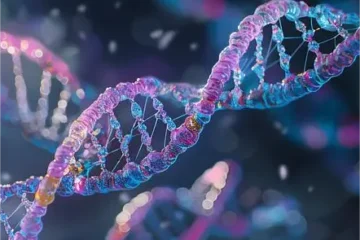What is CAR-T cell therapy?
CAR-T 19 is a treatment based on the use of the patient’s own cells to destroy leukaemic cells.
CAR T-cell therapy, like all forms of cancer immunotherapy, seeks to sharpen and strengthen the immune system’s inherent cancer-fighting powers. It involves treating patients with modified versions of their own immune system T cells – white blood cells that help protect the body from disease.
Extracting T cells from the patient (cells from the immune system) by apheresis, a technique which allows the separation of the components of the blood, obtaining a determined quantity of lymphocytes. These are subsequently modified so that they recognise and attack the tumour cells, and they are then transferred back to the patient’s body so that, after being reprogrammed, they can recognise, attack and destroy the cancer cells.
Both the leukaemias and lymphomas that are produced by an alteration or malignisation of the B cells, have in common that they express a protein or antigen on their surface, called CD-19. When a cancer occurs, the lymphocytes cannot recognise the antigen and, therefore, cannot attack or stop the replication of cancer cells. Thanks to genetic engineering, it is now possible to reprogram lymphocytes and introduce genetic information so that, on their surface, these cells express the chimeric receptor or CAR-T that will recognise the tumour antigen (CD19) and destroy the malignant cells.
 This treatment has recently been authorised by the European Medicines Agency (EMA) and approved for healthcare use, so its use is now possible on prescription and not only in the framework of clinical trials.
This treatment has recently been authorised by the European Medicines Agency (EMA) and approved for healthcare use, so its use is now possible on prescription and not only in the framework of clinical trials.
PHASES OF TREATMENT WITH CAR-T 19
Apheresis
During the patient’s hospital stay, white blood cells, including the T cells, are extracted by means of a collection system (leukapheresis). These cells are sent for modification and subsequent cryopreservation.
Cell reprogramming
The cells (T-lymphocytes) are genetically modified to recognise cancer cells, as well as other cells that express the specific antigen that is to be destroyed.
Expansion
Modified T-cells are multiplied, frozen and, after passing a strict quality control process, sent to the hospital where the patient is.
Patient preparation
Prior chemotherapy is administered to the patient to prevent possible rejection of the organism and to allow CAR-T cells to graft and proliferate. The ultimate goal is to help the body accept the reprogrammed CAR-T cells.
Infusion
The modified T-cells are administered by an intravenous infusion, similar to a transfusion.
Attack of the cells
If the treatment evolves as expected, once inside the patient’s blood, the concentrated infusion of CAR-T cells attacks the B cells and begins to eradicate cancer cells.
Monitoring and results
The results, already published in scientific journals, suggest that more than 80% of children and adolescents who have received this new therapy, have gone into remission in the first three months of treatment.
CAR-T cells: the convergence of three advanced therapies
CAR-T 19 combines three types of advanced therapy: cell therapy, immunotherapy and gene therapy. It is considered a cell therapy as it is not a drug, but a “live” medication that is infused into the patient. It is also an immunotherapy, as the cells from the child or the adolescent’s own immune system are those that are going to fight the cancer cells. And thirdly, it is a gene therapy (one of the first approved by the FDA) as the lymphocytes are genetically modified to fight the disease.

